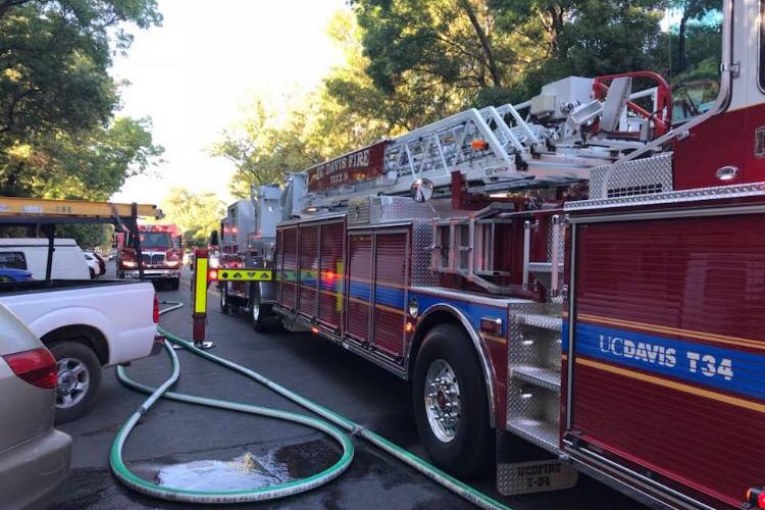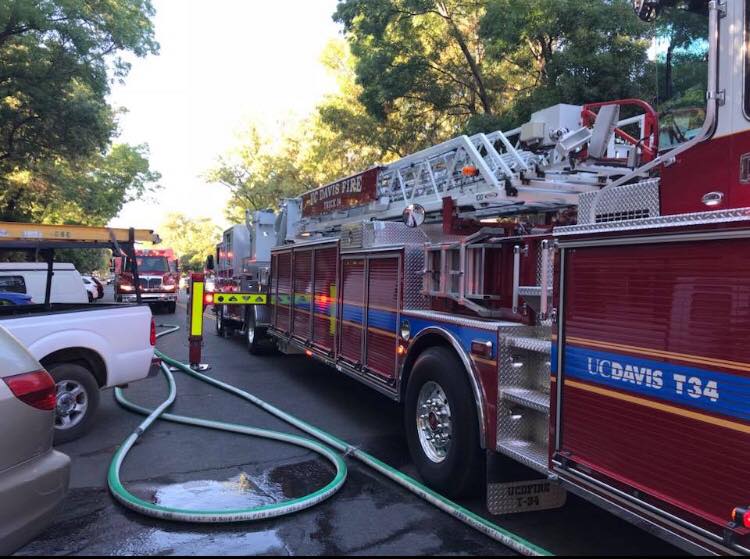

By David M. Greenwald
Executive Editor
Davis, CA – A I head into my 16th year of doing this, I have often believed that the new year doesn’t really start until we have our first big controversial local issue. Sadly, never was that more evident than on January 10, 2019, as a contentious meeting on Pacifico was followed by the shooting and eventual death of Natalie Corona.
When 2020 started, we knew we were going to have a presidential election and the primary season, what we didn’t realize is that we would have the start of a long pandemic and waves of social upheaval. That all began in January with news of the virus taking hold in China.
When 2021 started, little did we realize that January 6 would become a transformative event.
Here’s hoping that January 2022 proves a bit less *exciting* than the last three years.
There are three issues that appear to be on the horizon that we should be talking about quite a bit in the coming weeks.
The first issue is the ladder truck purchase authorization, which is coming back for a vote on January 11.
On the one hand, with the city building more vertically in the last several years, the number of buildings that are three or more stories has greatly increased.
In the Fitch and Associates Standards of Cover report, they found “it is recommended that the City of Davis invest in their own ladder truck.” It further said “that doing so would improve coverage, redundancy, critical tasks for structure fires and technical rescues. The report determined the best location would be Station 31.”
Lastly, the report said, “A community the size of the city of Davis with the complexity of risk should not be without consistent ladder truck service or (have to) depend on an apparatus from distant communities when the UC Davis apparatus is unavailable.”
On the other hand, the actual number of uses for the ladder truck at UC Davis in the city seems relatively small and, given the cost of acquisition and staffing, this still seems like a “nice to have” item rather than a “need to have” item.
My main objection has not been the cost of the ladder truck itself, somewhere in the neighborhood of $2 million—that’s a one-time cost and finding money for a one-time cost is feasible. The ongoing staffing costs are more concerning—$600K to $1.2 million.
Given the city’s ongoing gap in funding, this doesn’t seem like it should be the highest priority for the council.
We know that there were 115 calls for the ladder truck back in 2020, how many of them were actually fires? Probably a small percentage. For example, of the 832 incidents responded to by Station 31 in 2020, 49 were fires.
The second issue will come forward the day after the council meeting on January 12, when the Planning Commission will be reviewing the DiSC 2022 project. In a lot of ways this will be a replay of the 2020 DISC process—the project will be a bit smaller with smaller impacts on traffic and the like.
Given the relatively narrow loss in 2020, will simply having a smaller project be enough to induce the swing voters who might have opposed the project in 2020 to support it? Perhaps.
We believe that the biggest issue will remain traffic on Mace.
According to a new traffic analysis by Fehr & Peers, the DiSC 2022 project would generate 11,284 net new daily vehicle trips, with 1,052 trips occurring during the AM peak hour and 1,155 trips occurring during the PM peak hour.
This marks a considerable reduction from the nearly 24,000 projected trips generated by the original DISC project with about 2200 during the AM peak hour and nearly 2500 during the PM peak hour.
“Overall traffic… is cut by 55 percent,” project manager Dan Ramos said.
Opponents have already started to put out their objections.
“Less than a year after Davis voters rejected a massive industrial park to the east of Mace Blvd, the developers and city leaders are bringing it back and it is not alone,” a recent flyer warns.
They add, “Developers say they’ve reduced the project, but they can still apply to build more later. DiSC 2022 and the other 2 proposals for the Mace Curve means thousands more cars clogging the roads in our neighborhoods. Anyone who’s driven Mace on Thursday or Friday knows our roads are already full.”
One key thing we will be watching for in a debate that should largely be familiar—whether the project put out a new plan to handle traffic increases on Mace, and that could be a key to getting enough voters to rethink the project.
Finally, the last of the three issues is the Downtown Plan, which should go to the Planning Commission at some point for an EIR. It has been now two years since the DPAC (Downtown Plan Advisory Committee) finished their work, and we have a whole new world.
A little over a year ago, Jim Gray pointed out just how long a process this has been. It’s still going.
Gray was concerned at the time: “This initial document was prepared prior to the Pandemic and I don’t believe addresses many potential threats and opportunities brought on by the public health crisis and the resulting economic and business changes.”
To illustrate the point, the biggest issue in the last year has been the road closure at G Street and the city taking steps to make it more permanent and aesthetically attractive. That was an issue really on no one’s radar two years ago.
Gray warned, “When many of us think about downtown Davis we think about restaurants and the owners, chefs, and servers who provide us with our favorite foods and beverages. Most of downtown’s restaurants have been clobbered! I hope I am wrong, but I wouldn’t be surprised if 40%-75% of them fail in the coming year.”
Toward Gray’s warning, we have indeed seen a rash of high-profile restaurants close – DaVeres, Bistro 33, and Village Pizza just jump out.
I would hate to be demanding that we delay a long-delayed document even longer, but it does seem like there should be a review to make sure that the document is not a fossil before it’s even codified into law.
Finally, while I was supportive of the notion of redevelopment and putting housing above retail in the downtown, unless there is a lot of new funding available, I’m not sure how that can work. The financial analysis showed redevelopment was costly two years ago—that’s only gotten worse today.
We have some huge issues to take up in Davis right from the start, and there is always a new issue that emerges that you don’t expect.


“The first issue is the ladder truck purchase authorization, which is coming back for a vote on January 11.”
I’m guessing this is a done deal. While you were all in on police reform the firefighters union was backing Chapman over Swanson. A huge waste of money no doubt because UC Davis already has a ladder truck, but, in a game where you need to know how to count to three the firefighters are likely at five. Of course with $18 million in stimulus money in the bank buying off the firefighters for a few million is an excellent investment in the political futures of the CC members.